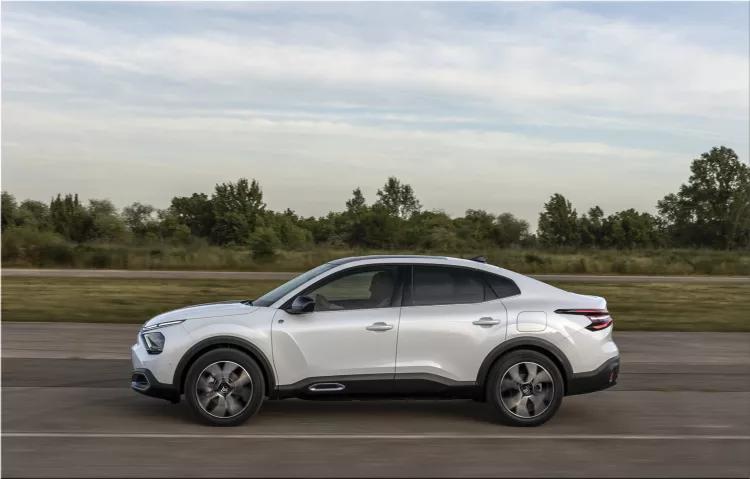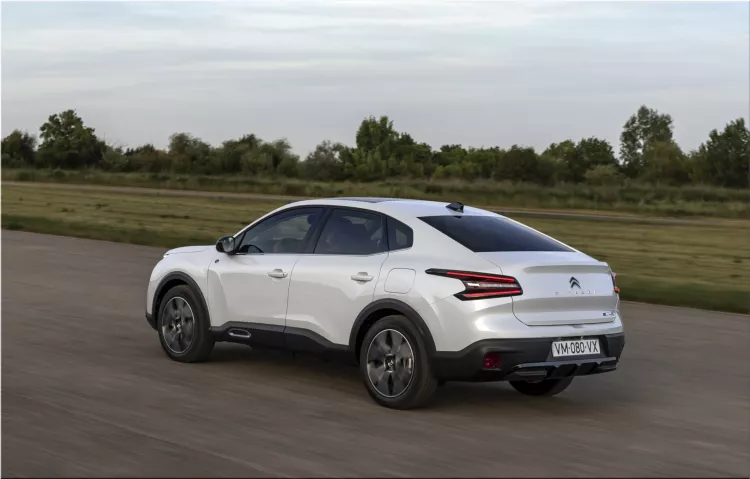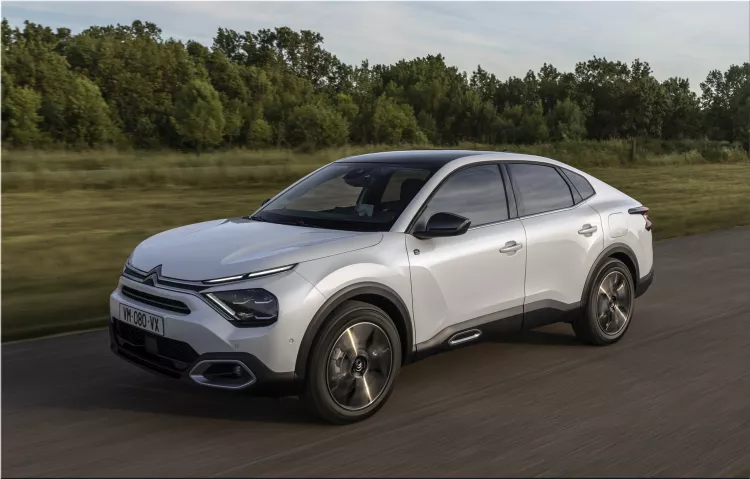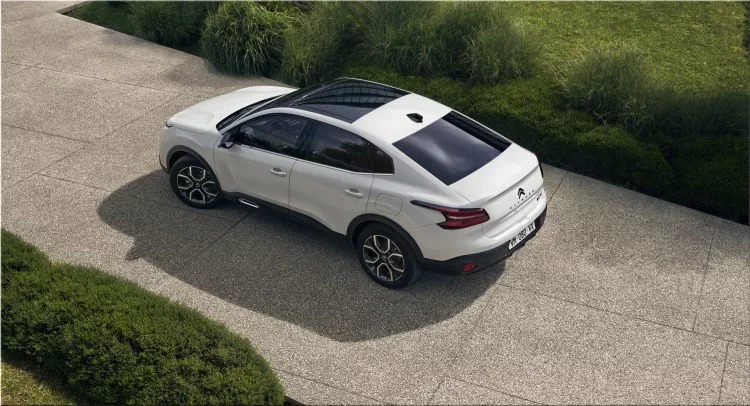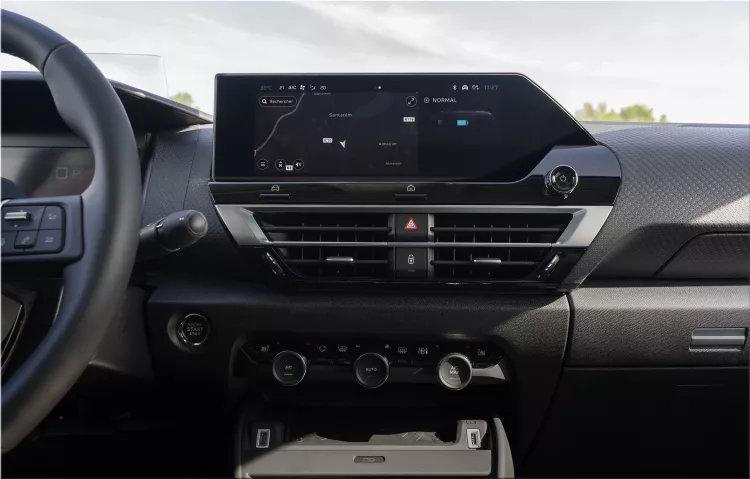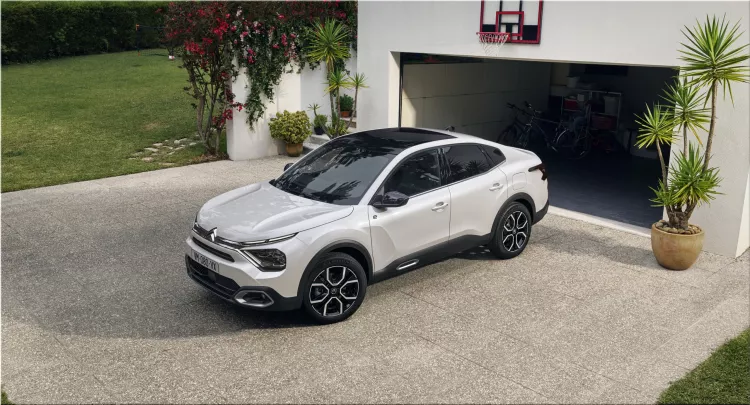The Citroen e-C4 X is a new electric saloon that promises to combine comfort, style, and efficiency. But how does it compare to other electric cars in its segment? To find out, Citroen commissioned UTAC, a globally renowned independent group, to conduct a 1,000 km test with four competitors: the Renault Megane E-Tech, the Volkswagen ID.3, the MG 4, and the Citroen e-C4 X itself. The results were surprising: the Citroen e-C4 X was the fastest to complete the distance, taking less time than the others to recharge along the way. Here’s how it did it, and what it means for the future of electric mobility.
The 1,000 km test: what is it and why does it matter?
The 1,000 km test is a practical way to measure the range and efficiency of electric cars. It simulates a long-distance journey that many drivers might face, such as a road trip or a business trip. The test involves driving 1,000 km (621 miles) on a mix of highways, country roads, and urban streets, with stops at fast-charging stations when the battery level drops below 20%. The test records the total time taken to complete the distance, including the driving time and the recharging time.
The 1,000 km test is important because it reflects the real-world conditions and challenges that electric car drivers face. Unlike the official WLTP range, which is based on standardized laboratory tests, the 1,000 km test takes into account factors such as traffic, weather, driving style, and charging speed. It also answers a common question that potential buyers have: how long does it take to drive 1,000 km in an electric car?
The Citroen e-C4 X: what is it and what makes it different?
The Citroen e-C4 X is the latest addition to the Citroen electric car line-up, which already includes the e-C4 hatchback, the e-C3 supermini, the e-SpaceTourer MPV, and the e-Berlingo van. The e-C4 X is based on the same platform as the e-C4 but has a longer and more aerodynamic body, resembling a saloon rather than a hatchback. The e-C4 X is also the first car in the Citroen UK range that is only available as an electric car, with no petrol or diesel options.
The e-C4 X is powered by a 154 bhp electric motor and a 54 kWh battery, which gives it a WLTP range of up to 260 miles. The e-C4 X can also charge at up to 100 kW, which means it can replenish 80% of its battery in just 30 minutes at a fast-charging station. The e-C4 X also features a new e-ROUTES app, which is a connected personal assistant that helps drivers plan and manage their routes, taking into account the battery level, the charging stations, and the traffic conditions.
The e-C4 X is designed to offer a comfortable and spacious driving experience with a high-quality interior, a large boot, and a range of advanced safety and convenience features. The Citroen e-C4 X is available in three trim levels: Sense, Shine, and Shine Plus, with prices starting from £31,995.
The 1,000 km test: how did the e-C4 X perform and why did it win?
The 1,000 km test was conducted by UTAC in February 2024, on a route that started and ended in Paris, and passed through cities such as Orleans, Tours, Poitiers, and Angouleme. The four cars involved in the test were the Citroen e-C4 X, the Renault Megane E-Tech, the Volkswagen ID.3, and the MG 4. All the cars had similar battery sizes, ranging from 50 kWh to 54 kWh, and similar power outputs, ranging from 134 bhp to 154 bhp. The test followed the same driving and charging protocol for each car, with the same drivers and the same weather conditions.
The Citroen e-C4 X emerged as the fastest in completing the 1,000 km, with a total time, including recharging, of 11 hours and 57 minutes. The competitors took between 14 and 67 minutes longer to cover the same distance. The table below shows the results of the test in more detail.
| Car | Battery size | Power output | WLTP range | Driving time | Recharging time | Total time |
|---|---|---|---|---|---|---|
| Citroen e-C4 X | 54 kWh | 154 bhp | 260 miles | 9h 47m | 2h 10m | 11h 57m |
| Renault Megane E-Tech | 52 kWh | 134 bhp | 264 miles | 9h 48m | 2h 23m | 12h 11m |
| Volkswagen ID.3 | 50 kWh | 143 bhp | 217 miles | 9h 52m | 2h 19m | 12h 11m |
| MG 4 | 51 kWh | 154 bhp | 214 miles | 9h 50m | 3h 04m | 12h 54m |
The main reason why the e-C4 X won the test was its fast and efficient charging performance. The e-C4 X was able to charge at 100 kW for most of the time, reaching 80% of its battery in 30 minutes. The other cars had lower charging speeds, ranging from 50 kW to 77 kW, and took longer to reach 80%. The e-C4 X also had an advantage in terms of its charging curve, which is the rate at which the battery charges at different levels. The e-C4 X maintained a high charging rate until 80%, while the other cars slowed down significantly after 60% or 70%. This meant that the e-C4 X spent less time at the charging stations, and more time on the road.
Another factor that helped the e-C4 X win the test was its aerodynamic shape, which reduced the drag and improved the efficiency. The e-C4 X had a lower coefficient of drag than the other cars, at 0.28, compared to 0.29 for the Megane E-Tech, 0.30 for the ID.3, and 0.31 for the MG 4 electric hatchback. The e-C4 X also had a longer wheelbase and a lower roofline, which enhanced its stability and handling at high speeds.
The e-C4 X also benefited from its electric motor, which delivered a smooth and responsive performance, with a 0-62 mph time of 8.9 seconds. The e-C4 X also had a good balance between power and efficiency, with a consumption of 18.5 kWh/100 km, which was lower than the MG 4 (19.1 kWh/100 km), and similar to the Renault Megane E-Tech (18.4 kWh/100 km) and the ID.3 (18.6 kWh/100 km).
The 1,000 km test: what does it mean for the future of electric mobility?
The 1,000 km test shows that the Citroen e-C4 X is a practical and efficient electric car that can handle long-distance journeys with ease. It also shows that Citroen has made the right choices for its electric car strategy by focusing on compact, light, and affordable batteries, fast-charging capabilities, efficient electric motors, and aerodynamic optimizations. These choices align with those made for the e-C4 hatchback, which shares the same philosophy.
The 1,000 km test also demonstrates that electric cars are becoming more competitive and attractive for customers who are looking for alternatives to petrol and diesel cars. Electric cars offer many advantages, such as lower running costs, zero emissions, quieter driving, and access to incentives and benefits. Electric cars also offer a different and enjoyable driving experience, with instant torque, regenerative braking, and smart connectivity.
The 1,000 km test also highlights the importance of having a reliable and accessible charging network, which is essential for the adoption and satisfaction of electric car drivers. The test used the Ionity network, which is a joint venture of several car manufacturers, including Citroen, that aims to provide fast and convenient charging stations across Europe. The test also used the e-ROUTES app, which is a new service that helps drivers find the best charging stations along their route and optimizes their charging time and cost.
The 1,000 km test is a practical and realistic way to measure the range and efficiency of electric cars and to compare them with their rivals. The test also provides useful information and insights for potential buyers who are interested in switching to electric mobility. The test shows that the Citroen e-C4 X is a winner in its segment, and a great choice for anyone looking for a comfortable, stylish, and efficient electric car.
Citroen's new e-C4 X is an all-electric compact crossover SUV with a stylish look that sets it apart from the competition. As a follow-up to the new flagship Citroen C5 X, the Citroen e-C4 X's design pushes the boundaries of what a… Continue reading
Spain is a country that loves cars. It has a long history of automotive innovation, from the pioneering Hispano-Suiza to the iconic SEAT 600. It also has a strong car industry, with more than 2.8 million vehicles produced in 2019, making it… Continue reading
Volkswagen has a long and proud history of making sporty and practical hatchbacks under the GTI name. From the original Volkswagen Golf GTI in 1976 to the latest Volkswagen Polo GTI in 2021, these cars have been synonymous with fun,… Continue reading
This is the Lamborghini Terzo Millenio, the supercar of the future. A little more than a year ago, Lamborghini announced that it was starting a collaboration with the students and professors of the MIT (… Continue reading

